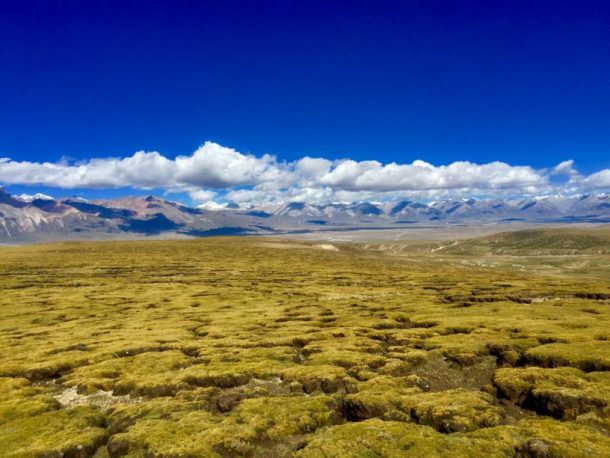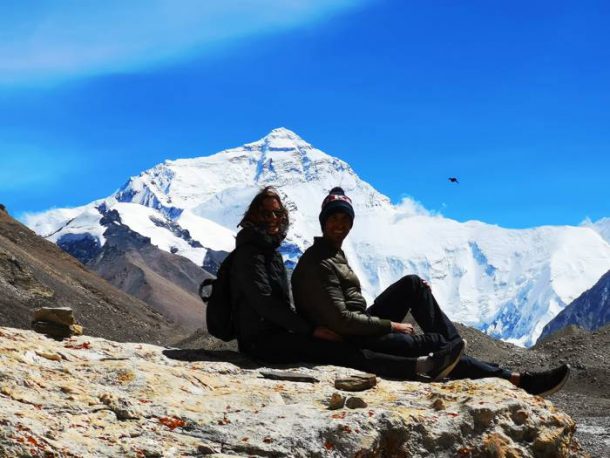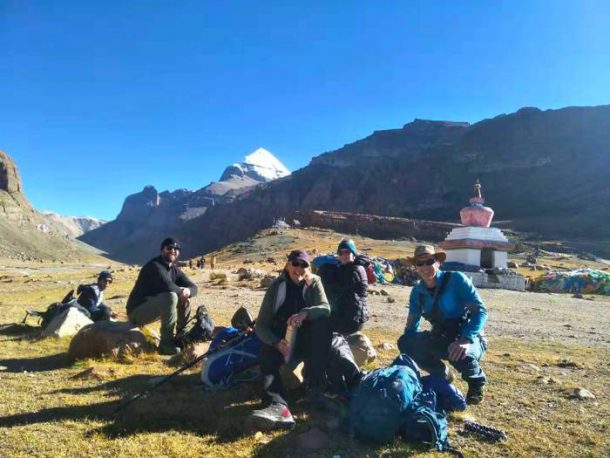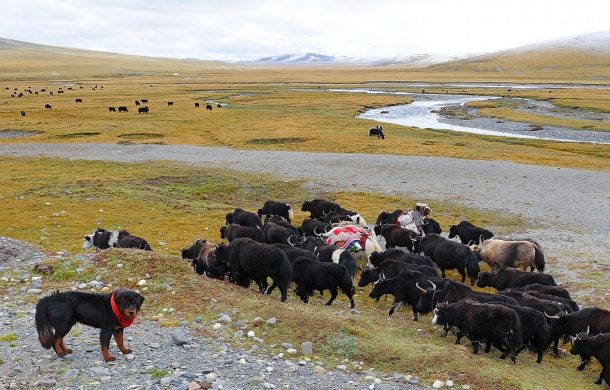
Tips and Advice for Trip To Tibet
Tibet Autonomous Region is the westernmost region of China. It lies on the high-altitude Tibetan plateau, the highest plateau in the world with an average elevation of more than 4,800 meters. A trip to Tibet is like no other vacation in the world, lying on the roof of the world, high above any other land on the planet. And with its unique version of Buddhism being the primary religion of the region. Which can be seen in everything the people do in their daily lives, there is nothing like a trip to Tibet to help you understand how different people around the world can be from one another.

Tibetan plateau -the roof of the world
A basic knowledge of the issues that you can be faced with when traveling to Tibet is essential. As you do not want anything to spoil your trip to Tibet. From the hazards of altitude sickness to the risk of snow blindness. These are all things to know about before you travel to Tibet. So that you can do something to prevent them from happening, and so that you know what to do in the unfortunate event that they do happen.
Table of Contents
Adapting to the high-altitude Tibetan Plateau
Tibet lies on the planet’s highest plateau, fringed by the high Himalayas to the west and south of the region. At altitudes that can reach as high as over 5,500 meters, altitude sickness, also known as Acute Mountain Sickness (AMS), is a real concern for tourists to Tibet from lower parts of the world.
Altitude sickness
Altitude sickness is caused by the reduced barometric pressure of the atmosphere at high and extreme altitudes. Which gives rise to a lower volume of oxygen per breath than at sea level. This reduced oxygen content in the air means that your body cannot get enough oxygen to maintain the internal organs and the brain, and during the period of acclimatization, while the body adjusts to the conditions and produces more red blood cells to accommodate the lowered oxygen levels, you can feel some of the symptoms of altitude sickness.

Our clients at Mount Everest Base camp for trekking during their trip to Tibet.
The main symptoms of altitude sickness are headaches and nausea, with an increase in dehydration that feels very much like a hangover. Without having the enjoyment of having been drinking first. A general feeling of tiredness and lack of energy is common as a symptom of altitude sickness, and you can also feel dizzy and unsteady at times, which is the brain not getting enough oxygen fast enough to keep you steady.
Precaution for Altitude sickness
The best way to try and reduce the risk of altitude sickness when traveling to Tibet is to travel first to a lower altitude that is within the range of elevations for intermediate acclimatization. Areas such as Xining, in Qinghai Province, are ideal for intermediate acclimatization, as it is above 2,000 meters, and is within the range where altitude sickness can first affect your body. A day or two in this elevation should allow your body to acclimatize to a lower oxygen level, making it easier to acclimatize to the even higher altitude of Lhasa.
It is also a good idea to avoid strong coffee and alcohol. As they cause dehydration which can bring on the symptoms of altitude sickness. You should also avoid strenuous exercise, and this causes the body to need more oxygen and exacerbates the symptoms you may already have. A good and nutritious diet is essential for better acclimatization. And plenty of protein-rich meats and vegetables can help to reduce the risk of altitude sickness when you reach Lhasa.
Sunburn
Believe it or not, sunburn is a major problem on the plateau, as the thinner atmosphere allows more of the sun’s harmful UV radiation through to the surface. By increasing the risk of sunburn whilst traveling across the vast open Tibetan plateau. Sunburn is not caused by heat but by high levels of UV radiation. Which affects the skin and leaves it burned and red, making you feel itchy and irritated. It is a good idea to bring a sun cream with an SPF of around 30 to counter the high UV rays of the sun and keep your skin from burning.
A wide-brimmed hat can also be helpful, as sun cream does not stop the harsher UVA radiation which can cause melanomas and skin cancer. During your trip to Tibet, the sun cream is one of the necessary accessories to pack in your bag.
Snow Blindness
Snow Blindness is a condition caused by the bright sunlight reflecting off the light ground of the desert areas and the whiteness of the snow in Tibet and can be extremely painful. Effectively, snow blindness is a mild sunburn of the retina, which leaves you partially blinded with a very blurred vision for a long period of time. Although it can be treated easily and quickly if caught in time. A good pair of sunglasses with a high UV filter can help to ensure that this does not happen while you are in the region. You should always wear UV protected sunglasses while you traveling to Tibet.

Our every clients wearing sunglasses during their trek around Mount Kailash.
Temperature Change
While Tibet can be a very warm place to visit in spring, summer, and even autumn. There is a massive temperature difference between night and day that can leave you freezing cold and shivering. The lower air pressure at the higher altitude means that the heat of the day is not trapped into the atmosphere once the sun goes down. And escapes through the thinner atmosphere, leaving the air cold and frigid.
Temperatures in the summer can drop from around the mid-20s to as low as freezing once the night falls, and in the spring and autumn months, it can reach well below freezing, to around -2 degrees in the area of Lhasa. In the west, it is even colder at night and can reach double minus figures, especially in the winter months. Take some warm clothing with you is essential during your trip to Tibet. Even if you are traveling to Tibet in summer, as the nights will be cold and many hotels do not have central heating.
Tibetan Mastiffs
The Tibetan mastiff is one of the largest dogs in the world and can stand up to four feet tall when on all four legs. Unsurprisingly, this huge hound can also be very vicious and is a dangerous animal to strangers. Unless it has been trained to be still to be photographed, as many of them are in the high-volume tourist areas. Out in the plains and prairies of Tibet.
The Tibetan mastiff is used as a guard dog by the nomadic herders that wander the plains with their herds of yaks and sheep. These huge dogs live with the nomad families from birth. They are extremely loyal to their family, protecting them and their herds from anything it sees as a potential threat. When visiting areas where nomads are staying, you will see many mastiffs around, and they should be avoided, keeping a distance from the dogs and the herds, to ensure they do not attack.
Stray Dogs
There are also a huge number of wild stray dogs in Tibet, something that is actually common all across Asia. These dogs are not friendly, and many have never had any human interaction to tame them, having been born and reared in the wild. Such animals should be avoided, as they can be dangerous, and if stray dogs are nearby, it is best to get into the car and let the guide know you have seen them.

Tibetan mastiff alongside its herd of yaks
First-Aid Kit for Trip to Tibet
Anyone traveling to a third-world country should prepare themselves a first aid kit to cater to the minor ailments that can sometimes not be avoided. And traveling to Tibet is no different. Your first aid kit should consist of headache tablets and diarrhea treatments. As these can be a major part of altitude sickness, and you can get diarrhea just from changing the type of drinking water you are drinking. A few band-aids and small plasters and bandages should also be included, for minor scrapes, as well as alcohol or alcohol wipes, antiseptic cream, and iodine, to treat minor abrasions and cuts that can happen anywhere.
Personal Medication
Major first aid treatments are not necessary, as any major medical treatment would require a hospital anyway. However, if you take a regular medication prescribed by your own physician. Then you should bring enough with you to last you for at least a week or two beyond your expected length of stay in China. Most prescription drugs are not available in Tibet. Even if they are, you may not be able to buy them unless you can provide your medical records to show that they are needed for your continued health. Better to be safe than sorry when traveling to Tibet.
Recent Posts
Tibetan Nomadic Tour
How to Explore Tibet
Easy Ways to Book a Tibet Tour in 2025
All Categories
- About Tibet
- book a Tibet tour
- Buddhism Practice
- Budget Tour
- China-Tibet Train
- Customized Tibet tour
- Historical Sites
- Hot Springs in Tibet
- News
- Photography in Tibet
- Tibet attraction
- Tibet Group Visa
- Tibet Motorcycle Tour
- Tibet Small Group Tours
- Tibet Tours and Tibetan Tour Guide
- Tibet Train
- Tibet Travel FAQs
- Tibet Travel Information
- Tibet Travel News
- Tibet Travel Permit Update
- Tibet Travel Prices Rises
- Tibet Trek
- Tibet Trekking Tour
- Tibet weather and climate
- Tibet Wildlife animals
- Tibet Winter Tour
- Tibetan Buddhism
- Tibetan Cultural Features
- Tibetan Culture and Poeple
- Tibetan Festivals
- What to see in Tibet



